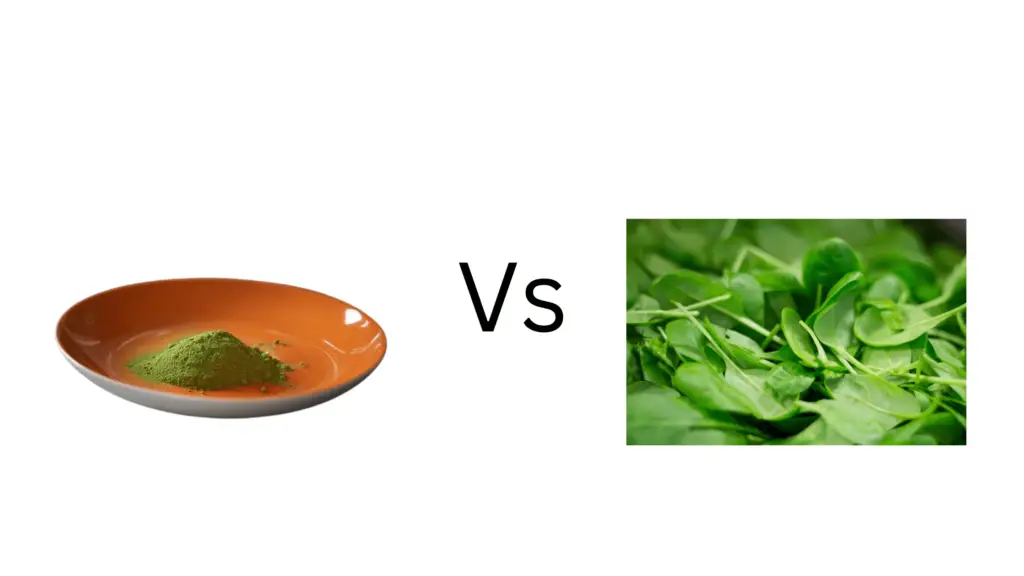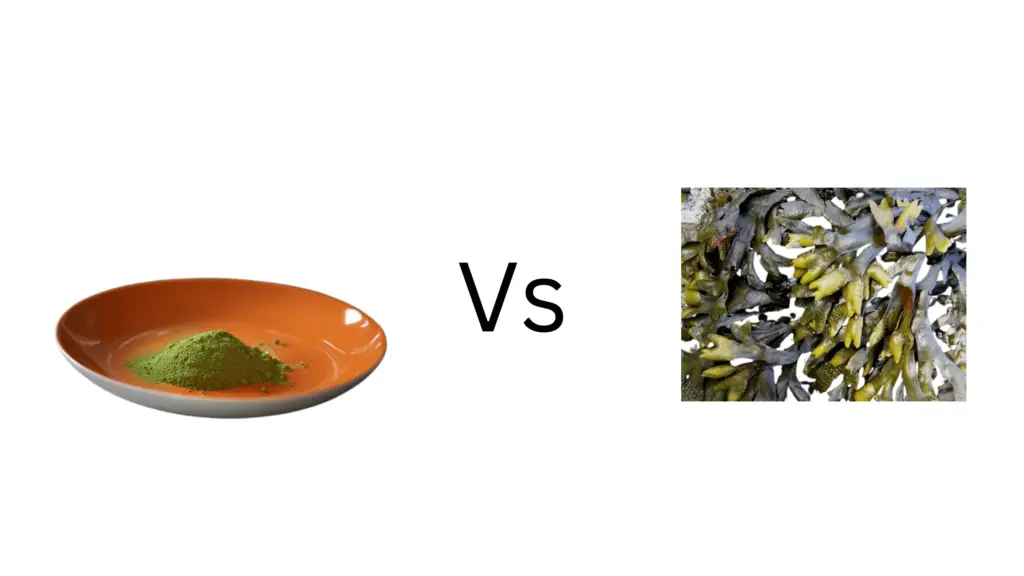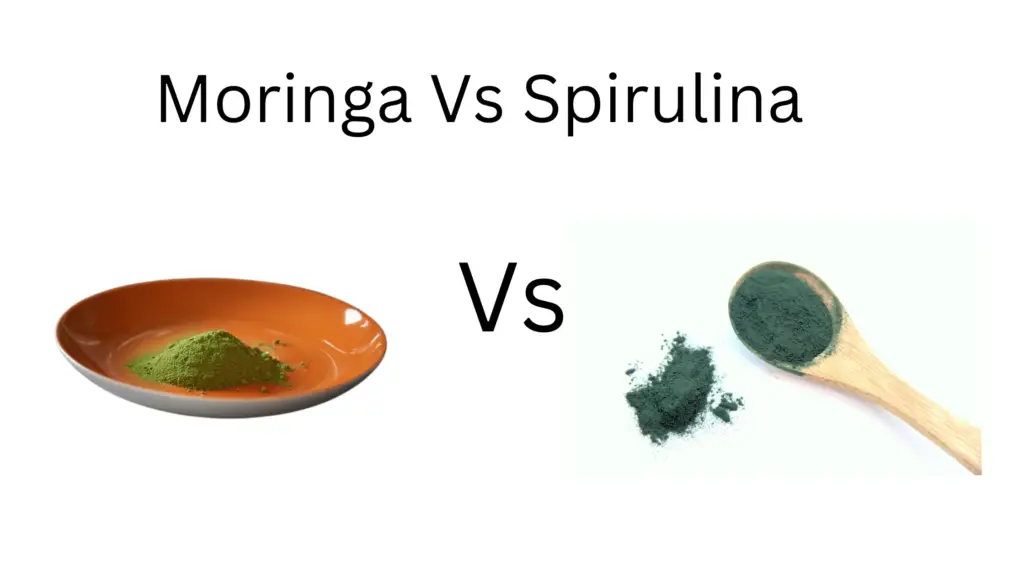Greens are easily digestible and serve as a great source of fresh and naturally rich food. As a matter of fact, the Dark green leafy vegetables also known as DGLVs are arguably considered the best super foods in the world.
Interestingly, there has been increasing trends of many individuals necessitating the need to get contacted with greens on daily basis; whether to be eaten in form of an addition to their diet or to be drank as green juice.
For Moringa and Spinach, both represent a type of green and are said to be nutrient-dense leaves. As you read on this article, you will be getting adequate insights on these two nutritional powerhouses, as we compare them alongside each other.
Moringa vs Spinach: Botany
The botanical name “Moringa oleifera” is widely used to describe this tree plant belonging to the family “Moringaceae”.
The genus name “Moringa” was coined from the Tamil word, “murungai” which means, “twisted pod”, while the other name called the species name “oleifera” was coined from the Latin words “oleum”, and “ferre” which means “oil” and “to bear” respectively.
Different names are been used to describe this plant tree as dependent on different areas of cultivation.
In English regions, it’s popularly known as just Moringa, or drumstick tree, and horse radish tree in other regions.
Moringa can either be a deciduous, evergreen or small to medium multipurpose tree, bearing leaves that are alternate, and about 7-60 cm in length.
The Moringa leaves are pinnated, having between 4-6 pairs of dark green leaflets that are 1-2 cm long.
On the other side, the botanical name “Spinacia oleracea” is widely used to describe this plant belonging to the family “Amaranthaceae”.
Spinach as it’s popularly called is a leafy green flowering plant having leaves that are simple, of varying sizes, alternate, triangular or ovate shape, and between the length 230 cm and width 115 cm.
This annual plant also has small leaves topping the flowering stem, with bigger leaves mounting the plant base. The Spinach plant can grow as high as 30 cm bearing edible vegetable leaves.
Moringa vs Spinach: Nutrients
These two greens are somewhat close when it comes to nutritive evaluation. This evaluation is made on the basis of a 100-gram serving of both greens with reference to the USDA National Nutrient Database.
From this point of reference, it was generally deduced that Moringa had more of proteins, carbohydrates, calories and fats than Spinach, while the Spinach bettering off Moringa in dietary fiber evaluation.
More so, it was deduced that Moringa had more of iron, manganese, calcium, vitamin B6, riboflavin, thiamin, vitamin C, and niacin than Spinach.
Meanwhile, the Spinach had been gathered to have more of folate, magnesium, vitamin B9, carotenoids (pro-vitamin A), and potassium than Moringa.
Moringa vs Spinach: Benefits
There are so many health benefits attached to these two greens owing to their high nutritional values.
For Moringa, it has been widely reported to contain properties that fight inflammation, virus, cancer and bacteria.
The high polyphenol level in Moringa leaves and flowers specifically works well for the liver in terms of oxidative stress reduction, protection against damage, toxicity, and raising protein content, among other benefits.
For Spinach, its high carotenoid level from high intake helps to reduce the risk of macular degeneration that causes adult blindness due to age.
More so, Spinach is useful in maintaining cholesterol levels, thanks to its strong bile acid binding capacity especially in its raw and uncooked form.
Besides, when richly added to animals diets, report has it that it can lower neurodegenerative changes, as well as damage due to ischemic stroke in the concerned animals, among other benefits.
Moringa vs Spinach: Economic Importance
Amidst the long list of the economic importance of these two greens, we cannot but mention a few. In Moringa, you have a green that’s used by some countries as a continuous solution for malnutrition; this is so because of the ease in the cultivation of this green.
More so, in Moringa, you have a green with commercial production potential whether in form of cash crop or component of agro forestry systems.
Furthermore, introducing this green into current production systems will improve biodiversity, food production, and industrial growth from its products and by-products.
The economic importance of Moringa cut across medicinal, food, agricultural, and industrial uses that also include animal feeding.
In Spinach, you have a cool season leafy green vegetable crop that matures rapidly.
This green ranks among the top of all the nutrient-dense foods; with much of its fresh consumption rising over time especially as a result of rising demand for packaged salads.
Which is Better Moringa or Spinach?
Both greens are great valuables especially on the basis of the nutrients they contain, but an overall verdict can be given to Moringa been the best of the two when you critically compare side by side.
Conclusion
However, of all the deductions made in this article, you must note that these two greens contain reasonable amounts of valuables, but are only higher in value varying from one nutrient to the other.
Read also: Moringa vs Kelp
Reference
- Spinacea oleracea — spinach
- Moringa oleifera: A review on nutritive importance and its medicinal application
- NUTRITIONAL VALUE OF SPINACIA OLERAECEA SPINACH-AN OVERVIEW
- Moringa oleifera is a Prominent Source of Nutrients with Potential Health Benefits, retrieved from :https://www.ncbi.nlm.nih.gov/pmc/articles/PMC8373516/



